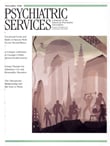Application of the Tarasoff ruling and its effect on the victim and the therapeutic relationship
Abstract
OBJECTIVE: The Tarasoff case and subsequent court decisions and legislation in many jurisdictions established a duty to protect the intended victims of patients who pose a serious threat of violence. An approach that has been legally sanctioned is to warn the intended victim. This study examined the effects of such warnings on the warned persons and on the therapeutic relationship. METHODS: All second-, third-, and fourth-year psychiatric residents (N = 46) in a university- based psychiatric residency program in San Francisco were interviewed about their experiences related to issuing Tarasoff warnings. RESULTS: Almost half of the residents (N = 22) reported having issued a Tarasoff warning. Most warnings were issued for patients seen in inpatient units and emergency rooms. In almost half of the cases, the resident was unable to contact the intended victim but did report the threat to a law enforcement agency. In almost three-fourths of the cases in which the intended victim was contacted, the individual already knew of the threat. The most common reaction among those warned was anxiety mixed with thankfulness; most expressed an intent to modify their behavior to increase safety. The second most common reaction was denial that the patient would ever hurt them. Clinicians reported that in most cases issuing the warning had a minimal or a positive effect on the psychotherapeutic relationship. CONCLUSIONS: Many of the anticipated negative effects of the Tarasoff decision have not materialized.
Access content
To read the fulltext, please use one of the options below to sign in or purchase access.- Personal login
- Institutional Login
- Sign in via OpenAthens
- Register for access
-
Please login/register if you wish to pair your device and check access availability.
Not a subscriber?
PsychiatryOnline subscription options offer access to the DSM-5 library, books, journals, CME, and patient resources. This all-in-one virtual library provides psychiatrists and mental health professionals with key resources for diagnosis, treatment, research, and professional development.
Need more help? PsychiatryOnline Customer Service may be reached by emailing [email protected] or by calling 800-368-5777 (in the U.S.) or 703-907-7322 (outside the U.S.).



